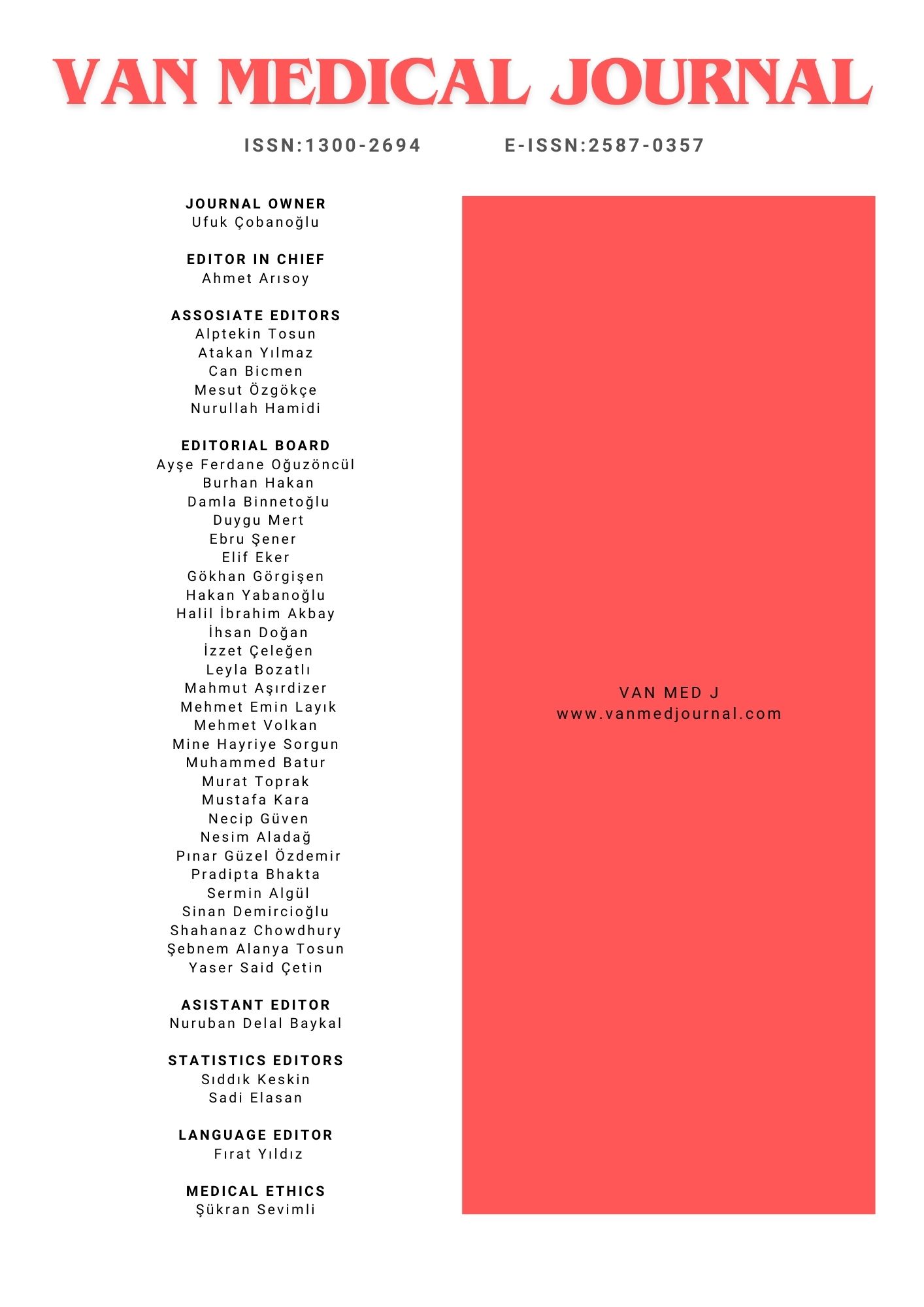A Simple Algorithm For The Reconstruction Of Nasal Defects: A Single Center Study
Ömer Faruk Koçak1, Daghan Isik2, Bekir Atik21Yuzuncu Yıl University Medicine Faculty Plastic,reconstructive And Aesthetic Surgery,van2Private Clinic,İstanbul
INTRODUCTION: Nasal defects occur mostly after cancer surgery or as a result of trauma, and are of importance in reconstructions. It is highly likely that the cosmetic consequences of nasal defect reconstructions will affect the individual’s social life as the location of the nose is in the middle zone of the face.
METHODS: 40 male patients and 36 female patients who underwent operations on nasal defects for various reasons, such as trauma, cancer surgery etc. Depending on several reasons, including size, the location of the defect and surgical border. A simple, easy and reliable algorithm that could be used in nasal defects was developed
RESULTS: The youngest patient, a 3-year-old girl with xeroderma pigmentosum and she has a basal cell carcinoma in her nose and the eldest patient at the age of 92, who had basal cell carcinoma at the tip of the nose. The mean age is 57.75.
The largest defect after surgery is 10x7 cm (mass 8x5 cm). Radial forearm free flap was applied to close this defect. The smallest defect was 0.6 cm (6 mm-lesion 3 mm) and this defect was closed primarily. The diagnosis of the largest lesion was basosquamous cell carcinoma, the smallest lesion was basal cell carcinoma.
DISCUSSION AND CONCLUSION: The nose is a complex structure that is made up of such sub-units as the dorsum, lateral nasal walls, type, alar wings, soft triangle and columellate. If a reconstruction is performed after the defects in these sub-units are evaluated according to a certain algorithm, better results could be obtained.
Burun Defektlerinin Rekonstrüksiyonunda Kolay Bir Algoritma: Tek Merkezli Bir Çalışma
Ömer Faruk Koçak1, Daghan Isik2, Bekir Atik21Yüzüncü Yıl Üniversitesi Tıp Fakültesi Plastik,rekonstrüktif Ve Estetik Cerrahi,van2Özel Klinik,İstanbul
GİRİŞ ve AMAÇ: Burun defektleri çoğunlukla kanser cerrahisi sonrası oluşan ancak travma sonrasıda gelişebilen ve rekonstrüksiyonu önem arz eden defektlerdir. Burnun yüzün ortasında konumlanması nedeni ile burun defektlerinin onanırımın kozmetik sonuçlarının kişinin sosyal hayatını etkilemesinin kaçınılmaz olduğu unutulmamalıdır.
YÖNTEM ve GEREÇLER: 40 erkek 36 kadın hasta burunda çeşitli nedenlerle oluşan defektler sonucu opere edildi. Defekt boyutları, defektin yerleşim yeri, cerrahi sınır güvenliği gibi faktörlere bağlı olarak burun defektlerinde kullanılabilecek basit, kolay ve güvenilir bir algoritma oluşturuldu.
BULGULAR: Hastaların en küçüğü 3 yaşında xeroderma pigmentosum tanısı alan ve burunda bazal hücreli kanseri bulunan kız çocuk, en büyüğü 92 yaşında burun ucunda bazal hücreli kanseri bulunan kadın hastaydı. Ortalama yaş 57,75 di.
Cerrahi sonrası oluşan en büyük defekt 10x7 cm (kitle 8x5 cm) di. Bu defektin kapatılması için radial ön kol serbest flebi uygulandı. Oluşan en küçük defekt 0.6 cm (6 mm- lezyon 3mm) di ve bu defekt primer kapatıldı. En büyük lezyonun tanısı bazosquamöz hücreli karsinom, en küçük lezyonun tanısı bazal hücreli kanserdi.
TARTIŞMA ve SONUÇ: Burun dorsum, yan nazal duvarlar, tip. alar kanatlar, soft triangle, kolumella gibi subunitlerden oluşan kompleks bir yapıdır. Bu alt birimlerde oluşan defektler belirli bir algoritma içerisinde değerlendirilip rekonstrüksiyon yapıldığında sonuçlar daha iyi olacaktır.
Corresponding Author: Ömer Faruk Koçak, Türkiye
Manuscript Language: Turkish

